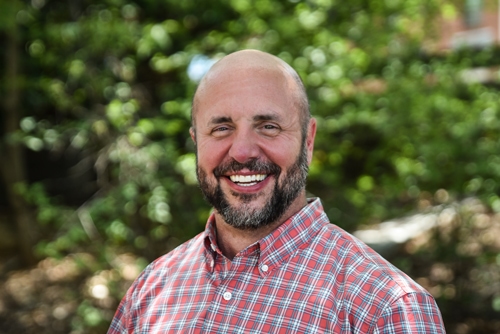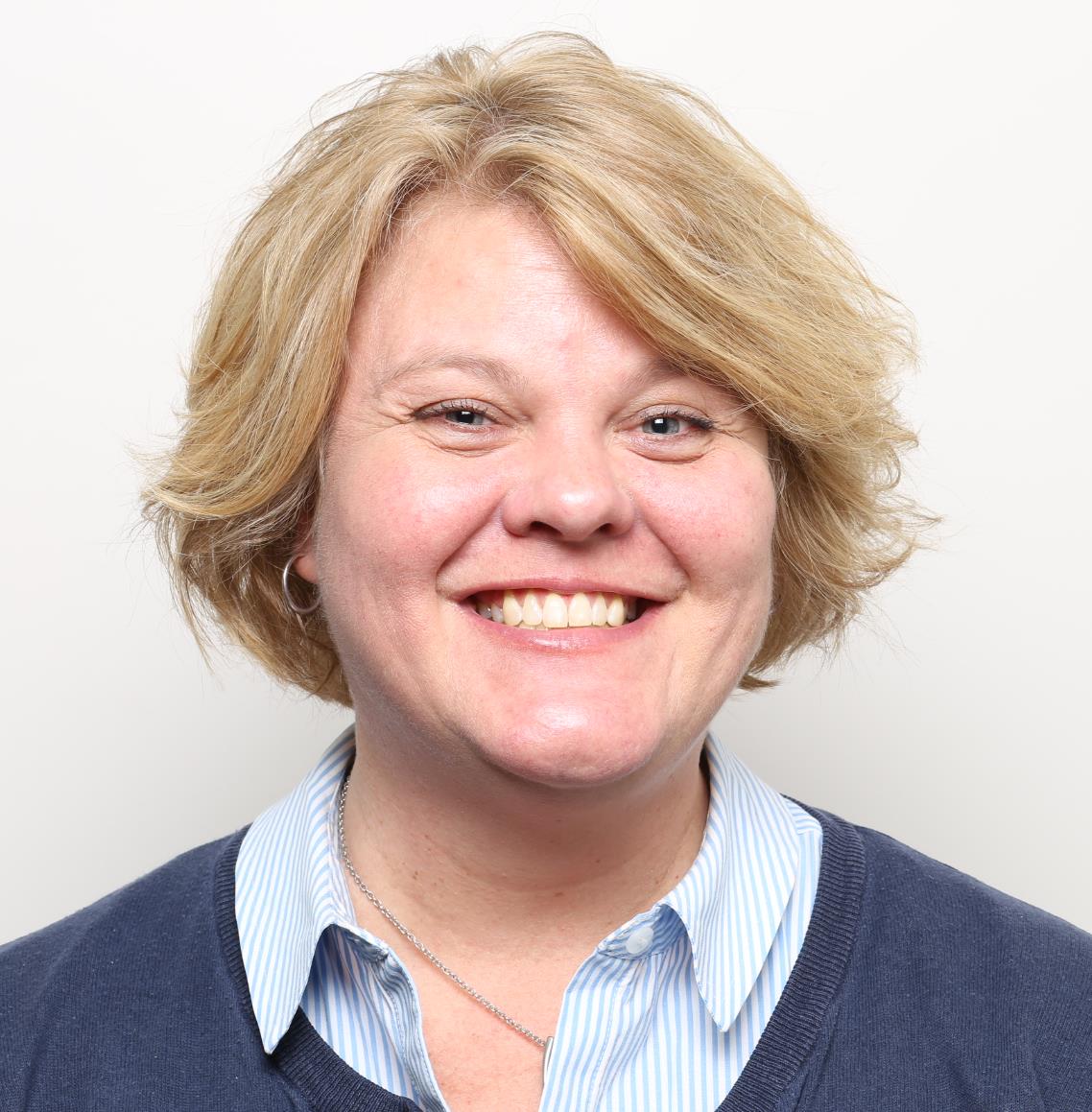From Iowa to Australia to Finland, and most recently Norway, Laura Wendling has followed her passion to integrate nature with engineering and technology to create solutions that, as she says, “are workable in lots of different situations, including cold regions.” In Season 7, Episode 12, host Sarah Thorne and cohost Jeff King, National Lead of the Engineering With Nature (EWN) Program, US Army Corps of Engineers (USACE), are joined by Laura Wendling, Senior Research Scientist at SINTEF Community in Trondheim, Norway. Jeff and Laura met at a recent conference sponsored by the American Society of Civil Engineers.
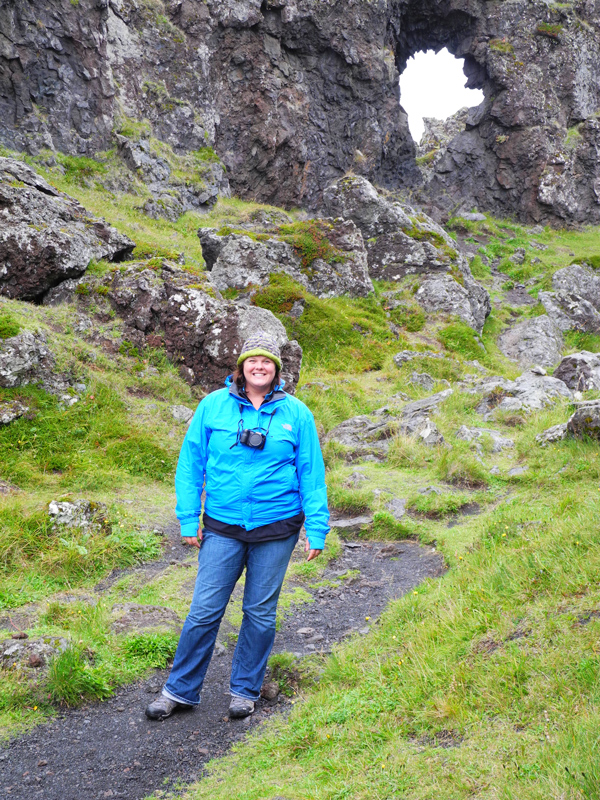
Laura has always been interested in nature and the natural world, curious about why and how things work. As she grew up, she aimed to improve these processes. She studied soil science and while working for the US Department of Agriculture, Laura connected soil science with human health. She moved to Adelaide, Australia, for a postdoc at the Commonwealth Scientific and Industrial Research Organisation (CSIRO), intending to be there for a couple of years but staying for more than a decade. She recently moved to Norway to work with SINTEF. As she notes, “I like the European innovation. It’s an interesting place to be a researcher. There’s lots of opportunities for collaboration, and I wanted to be part of it. I like the people and the culture and the nature. And I like that innovation is such a big part of the culture, the idea that we could take risks and try new things. So that’s how I came to Europe.”
Laura’s interest in innovating with nature was sparked in her undergraduate years while working as a research assistant on a project comparing how constructed and natural wetlands purify water from agricultural runoff in the Prairie Pothole region. “That really got me interested in understanding how we could design natural, or pseudo-natural, systems that worked as well or almost as well as the natural system itself—like a real ecosystem.” As she says, her “ah-ha moment” was when she learned about the use of nature-based solutions (NBS): “To have the added emphasis on stakeholder engagement right from the beginning, and making sure that we plan projects so that we’re deriving social and economic benefit in addition to the core target of achieving some kind of ecological outcome—it just made so much sense to me. We can work across disciplines to bring in the very best knowledge and expertise from all these different people and communities that don’t typically work together. The result is a whole that’s greater than the sum of the parts.”
Today, Laura is particularly interested in how climate change is affecting cold regions. She cites a recent report published by the European Environment Agency, the European Climate Risk Assessment, which highlights gaps in current understanding, and also the Synthesis Report of the Sixth Assessment Report, published by the Intergovernmental Panel on Climate Change (IPCC) in 2023, which she notes discusses impacts in the Arctic region in particular. “The Arctic is warming at a rate that’s far greater than the rest of the world, and there’s been profound—possibly irreversible—effects on terrestrial, aquatic, freshwater, marine ecosystems, and the cryosphere, as well as the people who live in these areas. This is an area that’s in urgent need of climate change adaptation, and nature-based solutions may play an important role here.”

Jeff agrees and notes some of the work being done through the EWN Program in support of an Indigenous community in Point Hope, Alaska with the National Research Council in Canada and EA Engineering—a project highlighted in S2 Episode3 of the EWN Podcast. “We have a serious need in these cold regions to come up with innovative strategies that bring all these disciplines together, including working with Indigenous communities to integrate traditional ecological knowledge. Their involvement is critical to creating sustainable solutions that advance the needs and the priorities identified by these communities.”

In her work at SINTEF, Laura focuses or water and the environment, everything from water-cycle services and water management to the broader environmental issues associated with climate change. She notes the value of NBS in harnessing the power of nature instead of fighting against it. “We work with the ecosystems and the landscape to manage either excess water or drought. We manage the extreme events, then focus on how to adapt to these changes over the longer term—such as when and how much water we will receive, and what we need to do to adjust how we use managed water.”
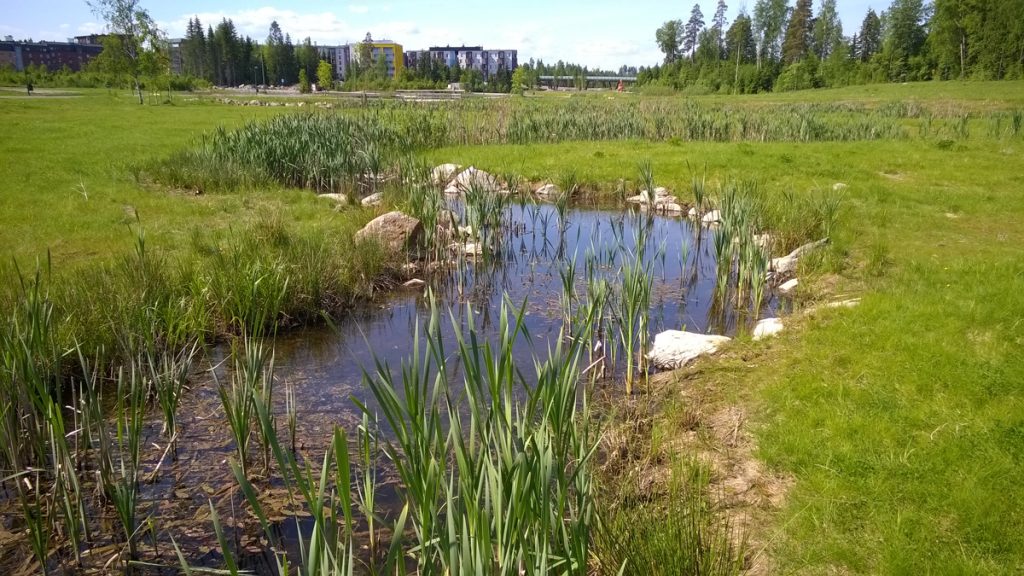
Laura highlights a large-scale demonstration project she and other colleagues at the Urban Nature Labs were involved in. They piloted different types of NBS for managing stormwater in a small city in Tampere, Finland, a city on an isthmus between two large lakes with an urgent need to protect the quality of the water that’s running off the urban area. “One of the things we trialed was using different plants on a Nordic green wall. We collected a bunch of plants that were going to be removed or possibly destroyed in an area that was being developed and put them up on a wall that’s now eight meters in height. We capture water from the roof of a building and filter it by using that water to water the green wall. Now we have this beautiful biodiverse green wall that’s attracting pollinators, and it looks lovely, and we’re very excited about it.” She adds, “The local community seems to be using the NBS we implemented, and the feedback has been overwhelmingly positive from all corners.” Based on the success of the first four pilot projects, there are now about 76 NBS projects being funded by the EU.
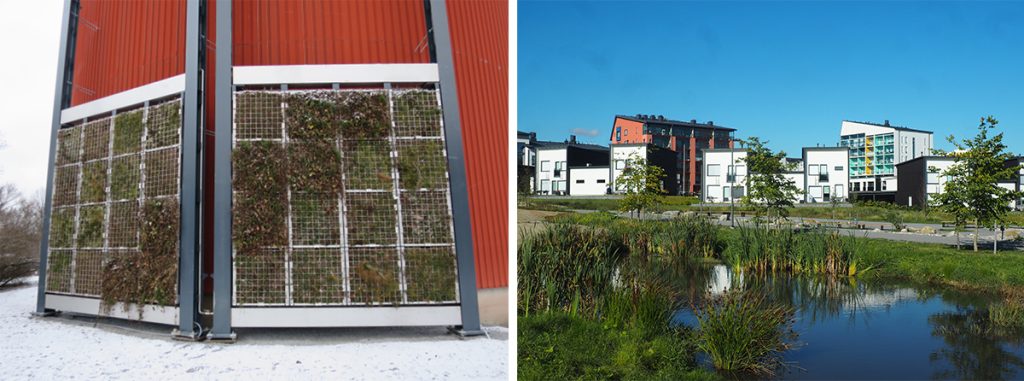
Laura is coeditor of the Nature Based Solutions Journaland coeditor of Evaluating the Impact of Nature-Based Solutions: A Handbook for Practitioners and stresses the importance of communicating about these approaches. “We can’t do science in secret. We should be telling everybody what we’re doing and sharing our results widely, including the things that don’t work.” The Handbook identifies 12 societal challenges where NBS can have a positive contribution and lists unique indicators and a recommended method to measure NBS performance and impact. “The whole idea is we need to synthesize information and be able to compare, not only across projects but across regions and different types of NBS. We want a comprehensive evidence base; but to establish that evidence base and have comparable data, we need to measure the same things and measure it the same way.”

Source: EU Publications
Laura also stresses the importance of using these indicators and measures to communicate beyond the scientific community. “As scientists, we’re really good at talking to each other and sharing the results of our latest cool study. To talk with people in different sectors, we need to present information in different ways. Traditionally, we haven’t been as good at talking with the public policy sector. We need better evidence that can help to underpin evidence-based policy. We also need the data—the knowledge to create financing and business models—to show that we can have a return on investment from NBS and EWN so that they can become mainstream. We need that scientific evidence, and we need to communicate it.”
Jeff feels that Laura’s travels and experiences have really aligned her focus with the principles and practices of EWN: “Everything you describe speaks volumes in terms of your affinity for EWN. You’ve been in the United States, Australia, Finland, and now Norway. You’ve had exposure to so many diverse ecosystems and so many different people. Those opportunities to learn in those diverse environments will serve you well, both now and in the future. I know you’re going to continue to be a leader in this space.”
Jeff and Sarah invited Laura back to talk about the policies that are driving strategies for including NBS in Europe. Our conversation with Laura in Episode 13 posts July 23. We hope you enjoy these special episodes!





